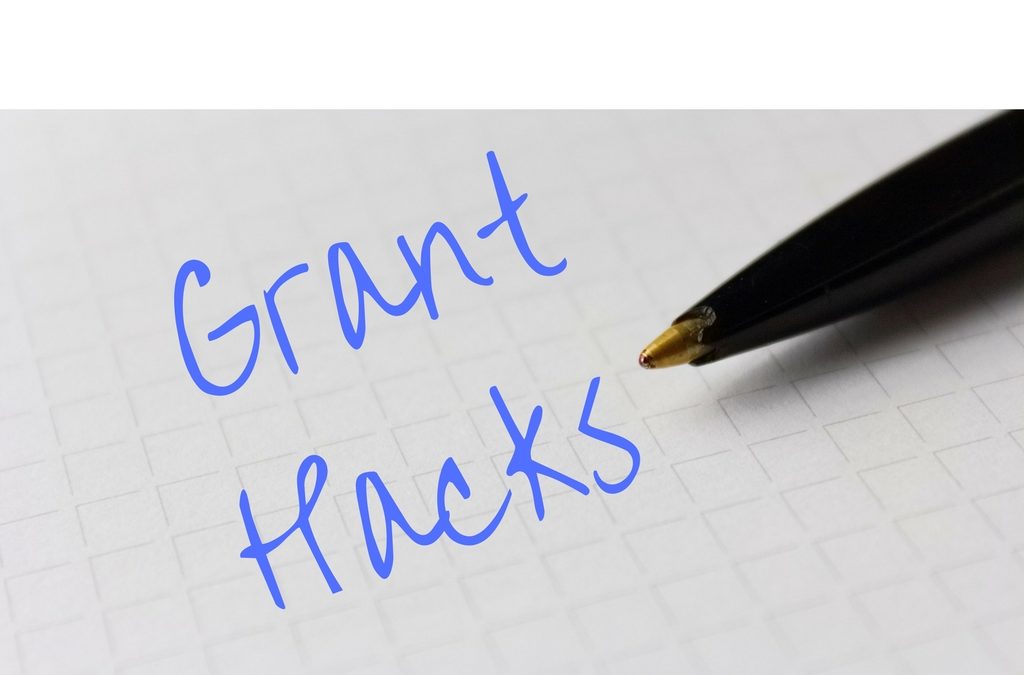Have a fantastic cause or innovative business idea but lack the funds to bring it to life? Grants can be your saving grace, offering financial support from government agencies, private foundations, and corporations. But securing these grants requires a winning proposal – a document that clearly outlines your project, demonstrates its impact, and convinces the funder to invest in you.
This guide equips you with the essential grant writing hacks to craft compelling proposals and significantly increase your chances of securing that coveted grant money.
Master the Art of Grant Prospecting
Before diving headfirst into writing, thorough research is paramount. Here’s how to find the perfect grant opportunity:
- Identify Your Needs:
- What specific project or program does your organization or business need funding for?
- Aligning your needs with the funder’s priorities is crucial.
- Explore Grant Databases:
- Utilize online resources like Grants.gov (https://www.grants.gov/) or Foundation Directory Online (https://fconline.foundationcenter.org/) to find relevant grants.
- Network & Seek Guidance:
- Connect with other grant recipients or organizations within your field. Their insights can be invaluable.
- Consider professional grant writers for complex proposals.
Need a professional’s help in crafting an investment-guaranteed Grant Proposal? Reach out here now!
Crafting a Compelling Proposal: Essential Elements
Once you’ve identified the ideal grant, it’s time to craft a winning proposal. Here’s a breakdown of key elements:
- Compelling Cover Letter:
- Briefly introduce your organization, project, and its significance.
- Highlight the alignment with the funder’s priorities.
- Conclude with a call to action, encouraging them to review your full proposal.
- Executive Summary:
- This is a concise overview of your entire proposal.
- Highlight the problem you address, your proposed solution, anticipated impact, and budget.
- Make it clear, concise, and engaging – it’s often the first part reviewers see.
- Needs Assessment & Problem Statement:
- Clearly define the problem you’re addressing.
- Use data and statistics to demonstrate its severity and impact.
- Quantify the issue whenever possible (e.g., number of people affected).
- Goals & Objectives:
- Define your project’s SMART goals (Specific, Measurable, Achievable, Relevant, and Time-bound).
- Develop clear, actionable objectives that contribute to achieving those goals.
- Project Methodology & Strategies:
- Detail your plan for implementing the project.
- Explain the specific activities you’ll undertake and how they address the problem.
- Demonstrate a well-thought-out and logical approach.
- Evaluation Plan:
- How will you measure the success of your project?
- Define metrics to track progress towards your objectives.
- Outline a plan for data collection and analysis.
- Project Team & Qualifications:
- Showcase the expertise and experience of your team members.
- Highlight their relevant skills and past accomplishments.
- Demonstrate your team’s capacity to successfully execute the project.
- Sustainability Plan:
- How will your project’s impact continue beyond the grant funding period?
- Explore potential long-term funding sources or income generation strategies.
- Budget & Justification:
- Create a detailed and realistic budget that outlines all project expenses.
- Clearly justify each budget item, linking it to specific project activities.
- Ensure your budget aligns with the requested grant amount.
- Appendices:
- Include any additional supporting documents, such as letters of support, resumes, or project timelines.
Grant Writing Hacks for Maximum Impact
- Read & Follow Guidelines Meticulously: Every grant has specific requirements and formatting instructions. Deviation can lead to disqualification.
- Pay close attention to page limits, font sizes, and margins.
- Write Clearly & Concisely:
- Use clear and concise language that is easy for the reviewer to understand.
- Avoid jargon and technical terms unless absolutely necessary.
- Focus on Impact & Results:
- Throughout your proposal, emphasize the positive impact your project will have.
- Quantify results whenever possible and showcase how your project addresses a critical need.
- Proofread & Edit Ruthlessly:
- Ensure your proposal is free of grammatical errors, typos, and formatting inconsistencies.
- A polished proposal demonstrates professionalism and attention to detail.
- Get Feedback and Revise:
- Don’t underestimate the power of a fresh perspective.
- Ask colleagues, mentors, or even potential beneficiaries to review your proposal for clarity, flow, and persuasiveness.
- Incorporate their constructive feedback to strengthen your proposal.
Need a professional’s help in crafting an investment-guaranteed Grant Proposal? Reach out here now!
Beyond the Proposal: Securing Grant Success
- Meet Deadlines:
- Grant applications often have strict deadlines. Aim to submit your proposal well in advance to avoid last-minute complications.
- Follow Up & Demonstrate Gratitude:
- After submitting your proposal, politely follow up with the grantmaker to confirm receipt.
- If your proposal is unsuccessful, inquire about areas for improvement in future applications.
Conclusion: Grant Writing is a Skill to Master
Securing grant funding takes dedication and perseverance. By following these grant writing hacks and continuously honing your skills, you’ll increase your chances of crafting winning proposals and turning your vision into reality. Remember, a well-written grant proposal not only convinces the funder to invest in your project but also serves as a roadmap for successful project implementation.
Bonus Tip: Stay updated! Grant requirements and priorities can evolve over time. Regularly check grant websites and funding databases for updates and emerging opportunities.
By implementing these strategies, you’ll be well on your way to transforming your grant writing skills and securing the funding you need to make a positive impact.
